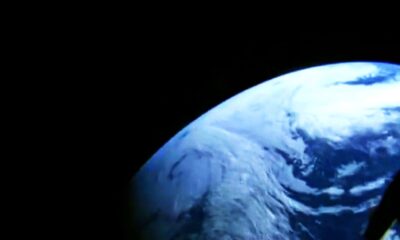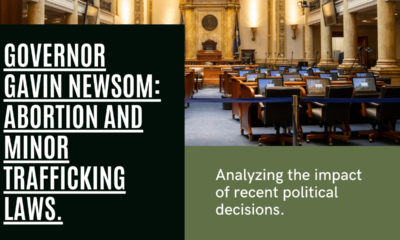Civilization
Multiplanetary civilization?
Yesterday Elon Musk made another plug for multiplanetary civilization. But the forces arrayed against him have been opposing this for years.
This week has definitely provided much excitement in the political realm. We have seen not merely one Twitter Files release, but two. Separately, the choice of a new Speaker of the House turned literally into the political contest of the century. But early yesterday morning, Elon Musk, the new CEO of Twitter, said something profound. He declared that life must become multiplanetary. From any other “eccentric billionaire” that would be a mere flight of fancy. But Elon Musk, before he even thought of buying Twitter, determined to run his own space program. He has built a company to accomplish the precise aim he mentioned this week. So what would a multiplanetary civilization look like, and how far can Elon Musk take the concept?
Multiplanetary – what it means
Herewith the statement Musk made on the subject:
He meant more than to say, “to make life multiplanetary, is necessary.” Musk actually meant that a rocket fleet that can lift 1000 times the combined payloads of all other rockets combined, is “necessary to make life multiplanetary.” When you combine this tweet with the one to which Musk made it in reply, you see that point. The “Starship” to which he refers, is his greatest development project to date: a rocket that can carry more than 100 metric tons of payload into low Earth orbit. True, the mighty Saturn V by NASA could lift significantly more: 118 metric tons into orbit, or 43.5 metric tons to the Moon. But unlike the Saturn V, Starship will be fully reusable. So the total payload capacity of a Starship, over its lifetime, could be nearly eighty-five times that of a Saturn.
In fact, everything Elon Musk has done with his Space Exploration Company (SpaceX), has gone to serve one purpose. That purpose is to create a multiplanetary civilization. To do that, he wants to be self-funding and not rely entirely on a massive, multi-decade government contract. True, he does accept contracts to lift smaller payloads. But these are payloads that governments – and private customers – want someone to lift anyway. He also is building Earth’s first low Earth orbit satellite-based Internet service. These projects generate revenue, to finance his central goal.
Why independent funding?
Musk needs that independent funding so that he can pursue his dream without fear of cancellation. In fact, SpaceX began with the development of reusable boosters and cargo and passenger capsules to replace a regular carrying capacity the United States had recently abandoned: the Space Transportation System, or “Space Shuttles.” Earlier than that, NASA canceled Project Apollo before it had accomplished a fraction of its original goals. NASA had fully intended to fly more than six sample-return missions to the Moon. (Actually seven, but one mission famously failed and almost cost the lives of its crew.) NASA had planned building a permanent base on the Moon, to support eventual mining operations and missions further out.
Alas, that was not to be. A fickle Congress canceled the program, and excused the cancellation with a familiar canard:
This doesn’t affect the Earth we’re living on!
NASA continues to send probes to the planets, asteroids, and Kuiper Belt Objects. But without exception these are robots. They take pictures and beam them back to Earth. They take samples and analyze them on-site. (One, Perseverance, is taking samples and packaging them for a later retrieval mission.) But they do not carry human beings, nor support any of the traditional missions of the Great World Explorers of centuries past. This is what Elon Musk wants to do: support building functioning cities – living communities – on other worlds.
Why the failure of vision?
One man who could have advised Elon Musk, if the two had been co-eval, was Robert Duncan-Enzmann PhD. This “forgotten man of space exploration” invented his first spaceship design in 1947. This vessel was a true “starship,” which he intended to support not mere interplanetary but interstellar missions. Nor did he rely on exotic, not-yet invented techniques like total gravity manipulation or faster-than-light travel. His vessel – symmetrical along a linear axis – would utilize the thermonuclear pulse engines of Project Orion to achieve “relativistic” speeds. A mixed company of about 2000 crew and passengers would set out in ten ships, toward a carefully selected star. Generations later, the fleet – with its company now numbering up to 20,000 – would arrive and, one hoped, found a colony, a refueling dock, and/or whatever else they could build using the resources available.
Sadly, he watched bitterly as NASA canceled Project Orion and another project to develop nuclear propulsion for aircraft. On or about 1980 he wrote a scathing screed, laying the blame for the cancellations – including that of Project Apollo – on the academic community.
Enzmann predicted our world today!
In fact, Enzmann predicted many of the ideologies we see today from the academic community and the World Economic Forum. Consider:
Imagine a presidential election campaign in which the candidates blither about tax reforms and saving the people from the maw of rapacious energy-producing companies. However, tax laws penalizing marriage are never whispered.
We need not imagine it. We remember it – in the Elections of 2008, 2012, 2016, and 2020.
Behold the liberal Eastern community of geniuses babbling about methods of abolishing municipal sewage systems “to save irreplaceable nutrients.” However, the same beautiful people never mention the European university professors who taught the precepts of technological devolution, abolition of education, and massive population decrease on a global scale as soon as possible.
Sound familiar? It should. That ideology informs the encouragement of “indigenous peoples” to repudiate modern technology.
Indeed, Paul (The Population Bomb) Ehrlich appeared (on New Year’s Day!) on Sixty Minutes. He told CBS Correspondent Scott Pelley that humanity itself was unsustainable. In fact he said that humanity would need five Earths to keep everyone in a Western-style lifestyle.
If you believe the resources of Earth are that finite or fragile (and many reasonable people dispute that), you have two solutions. As Enzmann feared, a global elite has adopted the solution of “massive population decrease.” Enzmann opted for finding new worlds to settle. Elon Musk would share his vision, if the two could have known one another.
Toward a multiplanetary space program
Indeed, had Musk read enough of Enzmann’s work, he would be collecting Falcon Nine second stages in orbit. Instead he wastes them in atmosphere re-entry, having given up on bringing them back to Earth and reusing them. (At least he isn’t throwing his boosters into the ocean!) But he intends replacing Falcon Nine with Starship, so that issue will soon cease to be.
Thus far, Musk plans to colonize one world: Mars. Indeed he designed Starship’s Raptor engine so that a Starship could easily re-fuel on Mars, with minimal infrastructure. And on Mars the “ship” part of Starship could launch to orbit as a single stage – not possible on Earth. Musk does not seem to plan to provide Earth-normal gravity for Mars’ first colonists. Therefore humans (and other animals) will adapt to the lower gravity and never return to Earth. Perhaps Musk regards that as a small price to pay. (Earth-normal gravity would be possible on Mars, using gigantic beveled centrifuges. But the population would lose the advantage of being able to look at a sky or landscape.)
Still, Mars would represent a first step, and an industrial base to support a true multiplanetary future for human beings. That is, if humans can have such a future. At least one Twitter user doubts that, and points out one salient fact: Earth is pre-engineered for human beings.
Duplicating that “engineering” will present a challenge. But to meet the greater challenge of academic opposition, Elon built his own resources. Smart move.
Terry A. Hurlbut has been a student of politics, philosophy, and science for more than 35 years. He is a graduate of Yale College and has served as a physician-level laboratory administrator in a 250-bed community hospital. He also is a serious student of the Bible, is conversant in its two primary original languages, and has followed the creation-science movement closely since 1993.
-

 Clergy4 days ago
Clergy4 days agoWhy Do The American People Let The Corrupt Media & Politicians Set The Propaganda Narrative – Speak On Their Behalf
-

 Constitution5 days ago
Constitution5 days agoCHAPTER 9: Norman Dodd Interview Space Is No Longer the Final Frontier––Reality Is [upcoming release April 2024]
-

 Entertainment Today5 days ago
Entertainment Today5 days agoCivil War (2024) – an incomplete prediction
-
![CHAPTER 10: Objective Reality Is Required for a Free Society Space Is No Longer the Final Frontier—Reality Is [upcoming release May 2024]](https://cnav.news/wp-content/uploads/2024/04/Objective-reality-v-acceptance-400x240.png)
![CHAPTER 10: Objective Reality Is Required for a Free Society Space Is No Longer the Final Frontier—Reality Is [upcoming release May 2024]](https://cnav.news/wp-content/uploads/2024/04/Objective-reality-v-acceptance-80x80.png) Education4 days ago
Education4 days agoCHAPTER 10: Objective Reality Is Required for a Free Society Space Is No Longer the Final Frontier—Reality Is [upcoming release May 2024]
-

 Human Interest4 days ago
Human Interest4 days agoIdaho prepares to defend its abortion ban
-

 Civilization3 days ago
Civilization3 days agoEarth Day Should Celebrate U.S. Progress & Innovation
-

 Civilization2 days ago
Civilization2 days agoNewsom plays silly abortion politics
-

 Education18 hours ago
Education18 hours ago‘Grading for Equity’: Promoting Students by Banning Grades of Zero and Leaving No Class Cut-Ups Behind








